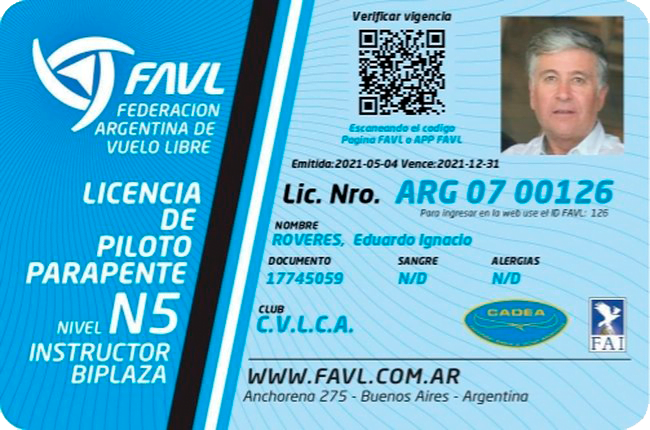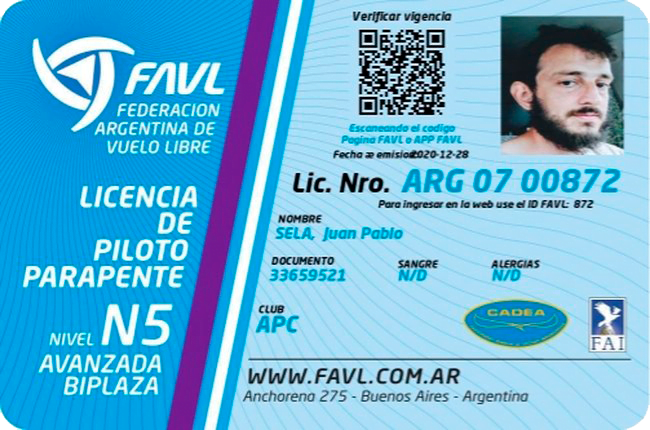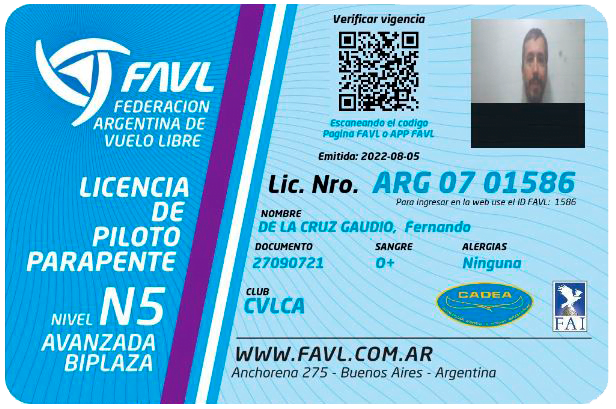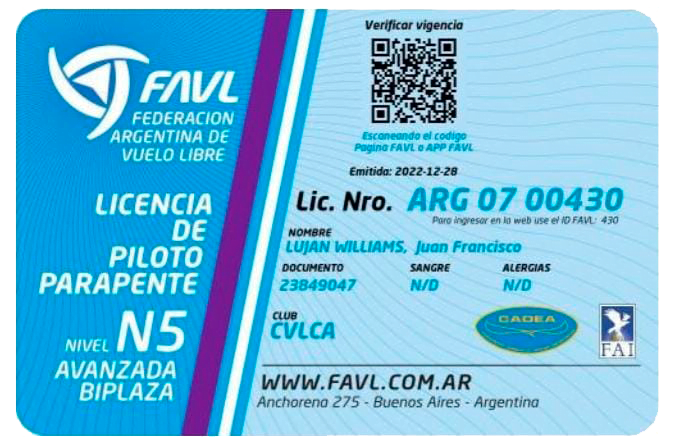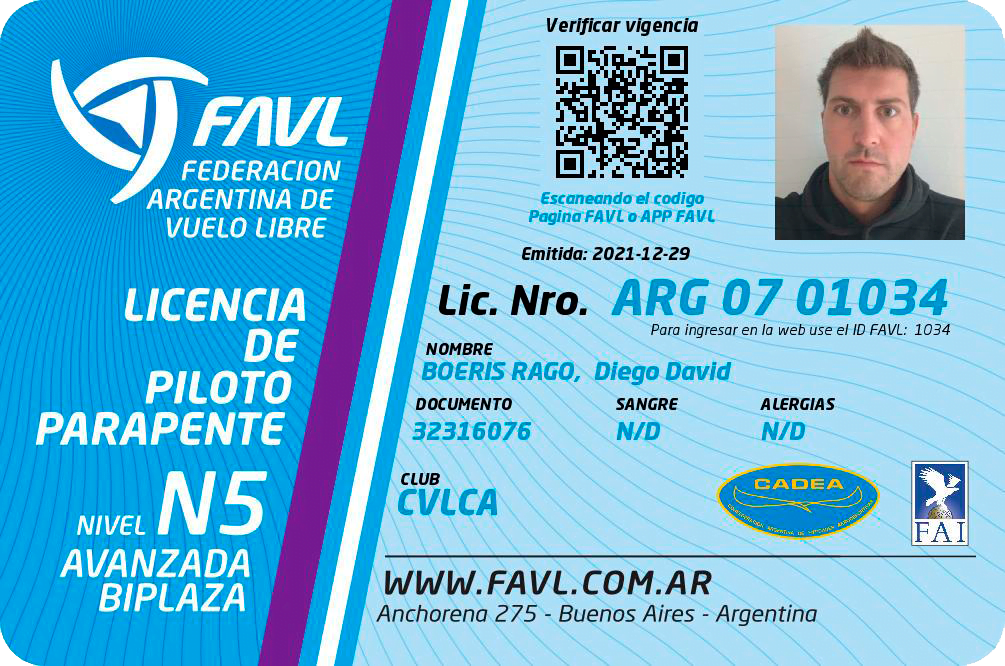Mountain paragliding initiation course To achieve this, the student must acquire knowledge of various topics related to paragliding. This knowledge is divided into the following Headings: Meteorology, Aerology, Aerodynamics, Flight Techniques, Equipment, Regulations. All these areas will have as their main objective that the pilot has the ability to enjoy flight practice with the greatest possible safety. The school will seek to always be adjusted to the regulations and requirements of the FAVL as regards instruction in particular and flight regulations in general.
Staff
The work team is made up of Instructor Eduardo Roveres (Lic. FAVL No. 126) who will also hold the position of Director, and the monitor pilots Juan Pablo Sela (Lic. FAVL No. 872), Emiliano Chaher (Lic FAVL No. 763 ) and Alejandro Montes de Oca (Lic. FAVL No. 374).
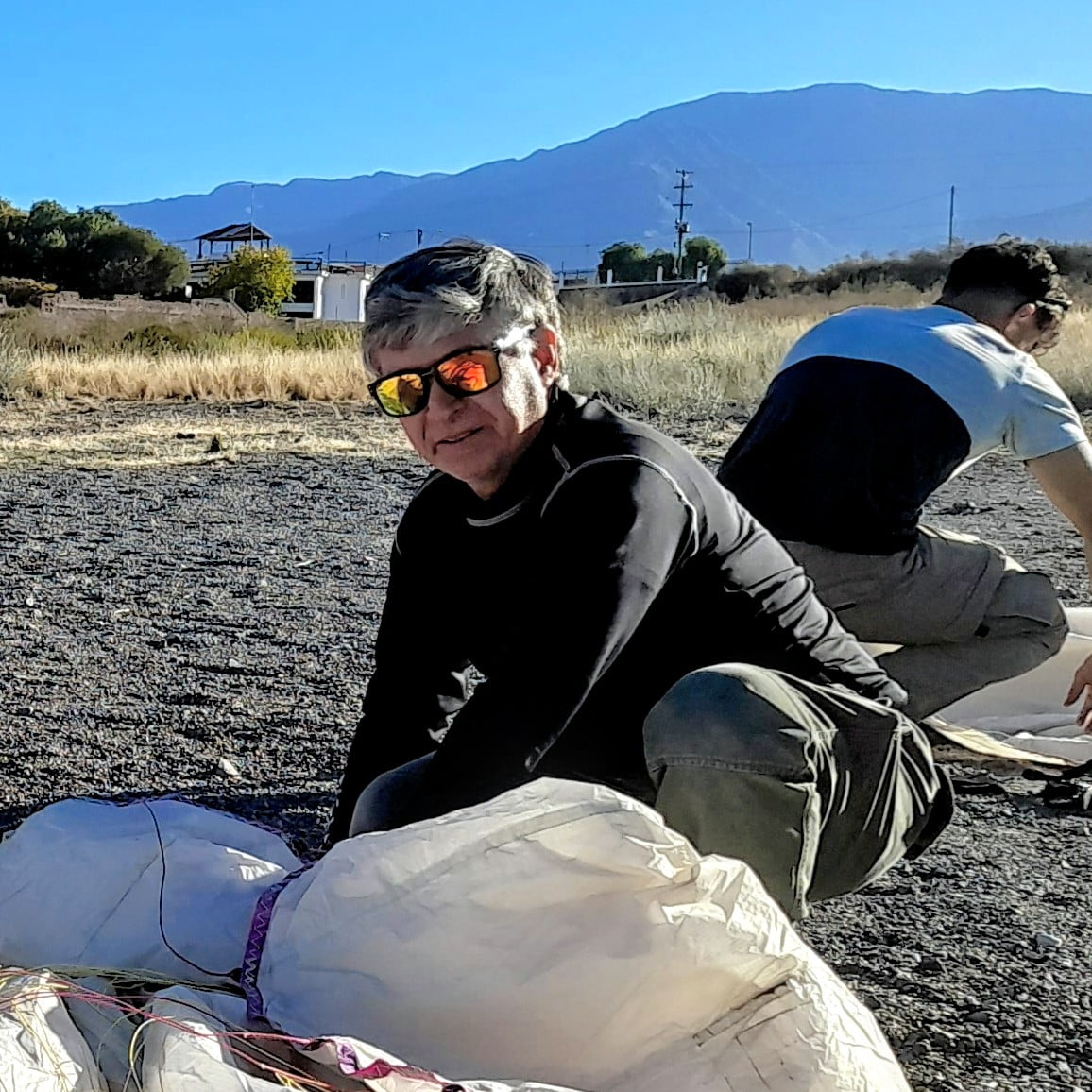
Eduardo
License no.: ARG 07 00126
Level: 5 Tandem
Certification: Argentine Federation. free flight
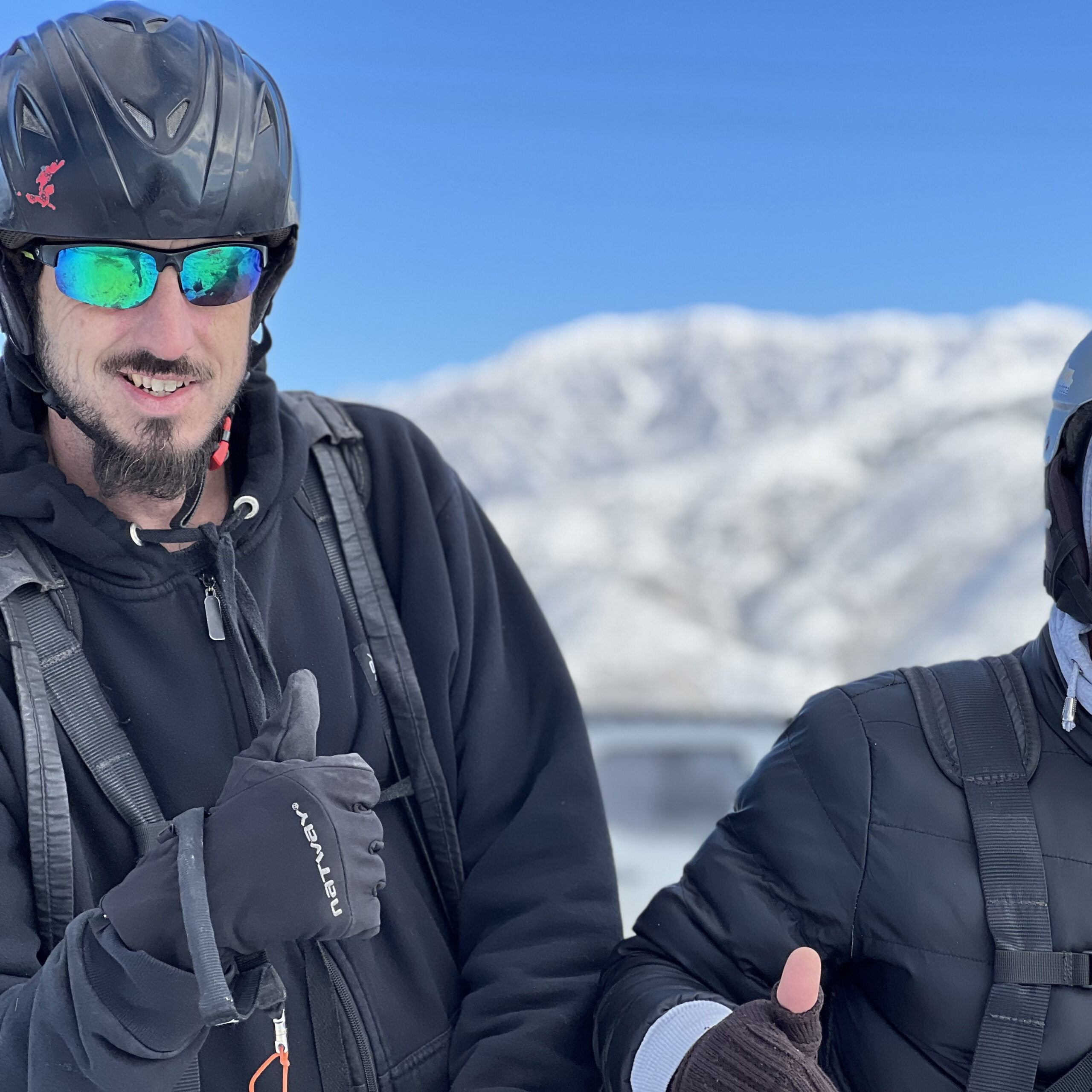
Juan Pablo
License no.: ARG 07 00872
Level: 5 Tandem
Certification: Argentine Federation. free flight
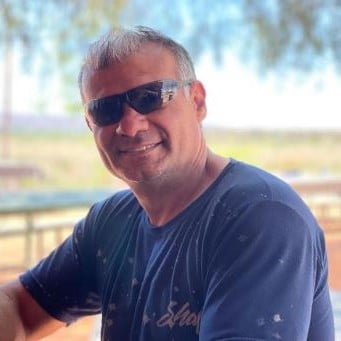
Alejandro
License no.: ARG 07 00374
Level: 5 Tandem
Certification: Argentine Federation. free flight
Place
Practical classes:
The initial practices of inflation and control of the paraglider will take place at the school’s landing base, located in El Challao, Mendoza.
Sometimes these practices may be carried out in another place that meets the aerological requirements for the practice. The first flights would be made in low-altitude hills (school hill) to practice takeoff and landing. The first high-altitude flights will be made from the takeoff of the Cerro Arco Free Flight Club located on Cerro Arco
Theoretical classes:
The theory will be taught at the school’s landing base, which has closed, heated facilities and toilets; as well as with the corresponding pedagogical elements for theoretical instruction. Course structure and methodology
Course structure and methodology
The course is divided into the following topics:
- Theory:
Meteorology, Aerology, Aerodynamics, Flight Techniques, Equipment, Regulations (general of the practice of free flight and particular of the FAVL). Each of these will be addressed both theoretically and practically.
- Land practice:
The practical instruction on the ground consists in the first place of the recognition of the flight equipment, its parts and functions. Secondly, the recognition of meteorological and aerological indicators for a correct practice on land. Thirdly, the different techniques of paraglider inflation, takeoff control and landing simulation will be taught.
- Practice in flight:
The first flight practices will be through tandem flights accompanied by the instructor, beginning with a first encounter with the flight experience, as well as basic notions of flight techniques and a recognition of the flight site. In successive tandem flights, takeoff, flight and landing techniques previously seen in theory will be practiced. In these flights, emphasis will also be placed on the recognition of the meteorological and aerological conditions of the place of flight, as well as checking the equipment prior to the flight and compliance with the flight rules. Solo flight practice will begin once the instructor considers that the student has achieved sufficient practical and theoretical command of inflation, takeoff, flight and landing. The first flights in this modality will be made from hills or low-altitude slopes under the supervision of the instructor. Finally, 10 solo high-altitude flights will be made from the official takeoff of the CVLCA. These flights will be supervised and assisted by the instructor and his assistants who will communicate via VHF radios with the student during the flight. Once these 10-12 flights are completed, the paragliding initiation course is considered completed. After this, the student will be able to perform basic level high altitude flights, recognizing the appropriate weather conditions for this type of flight and respecting the flight rules. You will also be able to understand the proper maintenance and features your flight equipment requires for safe practice. This course provides a necessary knowledge base for further progress of the pilot that allows him to perform advanced and intermediate level flights.
Equipment
The school will provide adequate equipment for instruction. Advice will also be provided to students in the acquisition of equipment in good condition.
Isurance
The students of the school will have civil liability insurance against third parties and accident medical expenses insurance.
Job program
Theory
- Inflation period and short flights:
- 3 classes:
- Paragliding equipment parts, inflation, classification of paragliders.
- General aerodynamics, aerodynamics of the paraglider.
- General meteorology, meteorology applied to paragliding, aerology.
- First 5 flights period
- 2 classes:
- Takeoff, flight and landing techniques.
- Rules of circulation in flight, FAVL Regulations, safety (Limits of the paraglider, configurations, paragliding in flight, identification and resolution of emergency situations, use of the emergency parachute.)
- 2 classes:
- Period last 5 flights
- 2 classes
- Flight techniques in Dynamics.
- Introduction to thermal flight.
- 2 classes
Practice
- Inflation and short flights (10 sessions with the instructor).
- 3 tandem instruction flights.
- Assisted solo flights (10-12 assisted flights).
STAGE 1
- 1 flight instruction
- 1 practical class (paragliding inflation)
- 1 theory class
